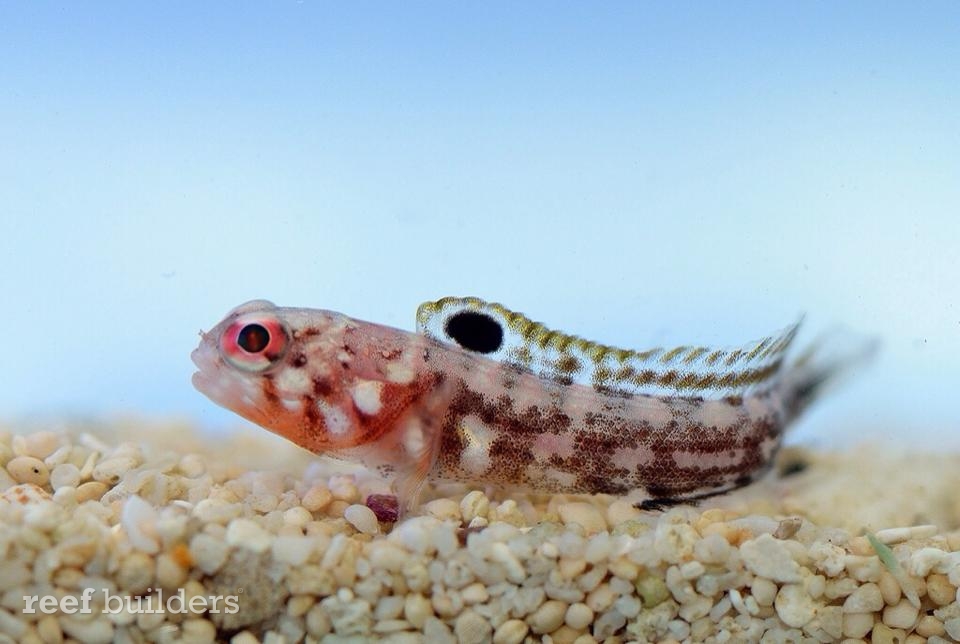Jawfish are a real whimsical group of animals that add a truly unique dimension to any reef tank. The family is largely represented by species in the genus Opistognathus, though other more obscure and less populous genera like Lonchopisthus and Stalix do occasionally offer a breath of fresh air. Despite their unique biology and behaviour, jawfish are not extensively revised and the family is riddled with undescribed and unknown species. Today’s feature offers a look at a baby Opistognathus whose identity eludes us at the moment. Because of its small size and incomplete growth, it is difficult to assess if this remains as an undescribed species or just the juvenile form of a known individual.

Opistognathus is the primary and largest genus with a wide range of characteristics and sizes spread out amongst the species. Some grow too large for aquariums but a good handful of them remain small and colorful enough for captivity. As their name suggests, Jawfish are well known for their large gaping mouths which they use very extensively for day to day living. Jawfish of all species live exclusively in sandy or rubble dominated substrates, in cylindrical, often vertical tunnels which they excavate using their large mouths. They do this by repeatedly siphoning and spitting out unwanted substrate, and are even able to move large pieces of rubble to stabilise their burrow’s integrity.
Another interesting application of their large mouths is seen in this family’s uncanny ability to mouth brood. Jawfish, like cardinal fish, are capable of holding eggs in their mouths until they are ready for release. The large volume capacity of their mouths allow them to do this pretty well, while at the same time being safely ensconced in their burrow. When confronted or faced by an intruder, jawfish often display passive aggression by opening their mouths to the fullest extent as a defence mechanism.

This individual above from Japan appears to be either an unidentified juvenile of the Opistognathus genus, or a yet to be described species. At this current stage it bears superficial resemblance to Opistognathus sp. 6, the chinstrap jawfish. The latter is rather stout and not as prominently elongated as the other species, but it does share some similar coloration to this species. This juvenile from Japan is brick-red in ground color, adorned with a series of snowflake like white markings and a black ocelli on the first portion of its dorsal fin. However again, and we have to make this quite clear, that because this specimen is still a baby, the coloration is likely to change as it grows and any classification now to related species is highly derivative.
The size comparison above shows the stature of this diminutive individual, with a 16mm coin placed next to it for juxtaposition. We received this specimen labelled as an unidentified Stalix, however it is very unusual for a Stalix species to possess such ornamental patterning and coloration. Stalix are usually concolorous or irregularly blotched, although a definitive key would be to check for apical branching in their dorsal spines which is unique to this genera. However this feature serves as an impossible diagnosis without the use of a microscope.

Joe Rowlett, a now regular consultant of anything fishy, suggests that this may be the juvenile form of Opistognathus dendriticus. The blotched markings of the baby fish does somewhat bear resemblance to this species, but identification may be better assessed as the fish grows and develop more concrete adult markings. However if it does turn out to be O. dendriticus, then the little specimens we have here are just teeny tiny juveniles, as the species is capable of reaching 28cm in length. Needless to say, this puts them at the opposite end of the suitability spectrum.
As of now, the babies are cute and have started excavating their burrows. Even if they were O. dendriticus, it is very unlikely that they will attain maximum size anytime soon, or at all in captivity.



